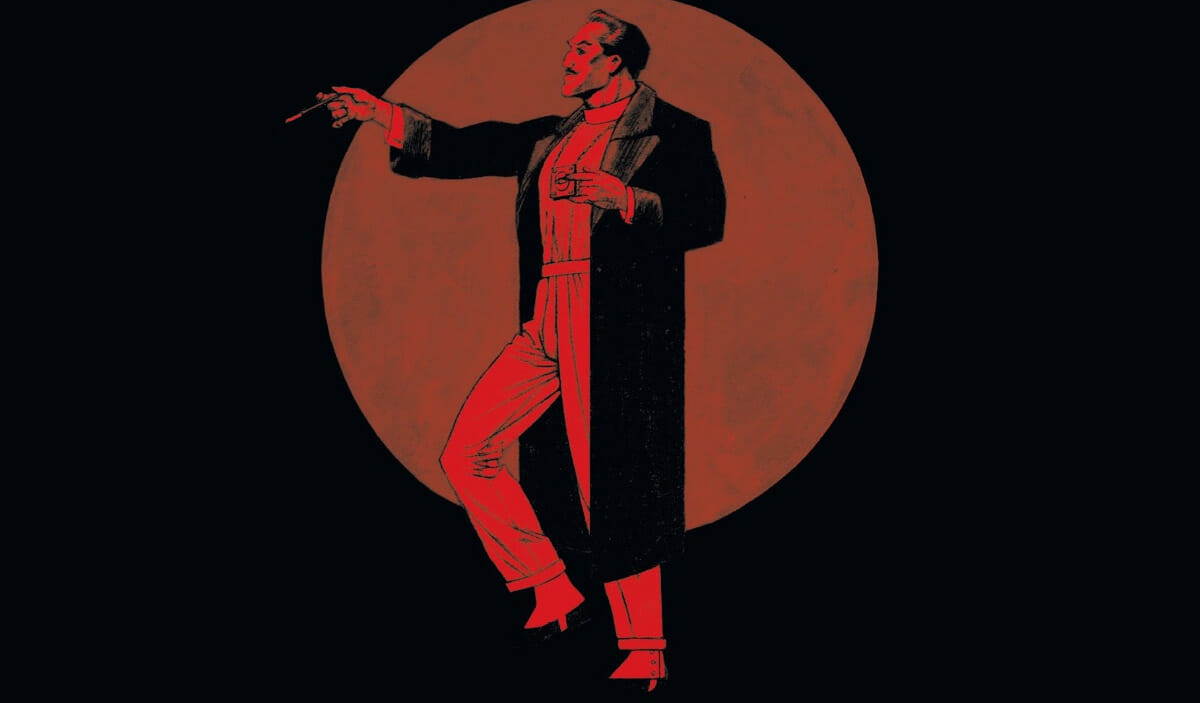There’s a level of certainty that exists within comic book fandom subsects of a certain demographic, generally falling under the purview of “Surely, if I like it, then the creator is just like me”. It’s an incredible exercise in hubris; but for so many reasons, this line of thinking is also one built in to the comics business as a whole, sometimes by the companies who publish them and sometimes, particularly in the 1980s and 1990s, purposefully established by the authors themselves.
For an author whose most well-loved work was arguably published between 1987 and 1995, John Smith is the perfect example of this: an out-of-the-closet gay man, some of whose following – still to this day – is convinced that he was married to a woman, and whose queerness was simply a signifier that he was “different”, “odd”, or — my favorite — queer in “the other way”.
What makes this so true, though? I’ve talked before at length about the thinly veiled line between the two meanings of “queer” when it comes to Smith’s work, and just how prevalent the themes of queerness and the feelings of being out and gay are strung all the way through his lyrical scripting. So how exactly do we land with a fair sum of Smith’s old-school fandom still coming up with the idea that he was as straight as an arrow and could never ever possibly stray from their idea of what his writing meant? It all comes back to the greatest trick queers have ever pulled, and one that Smith managed to pull for the majority of his bizarre and delightful career. The simple truth is, whether intentional or not, John Smith mastered the art of code switching.
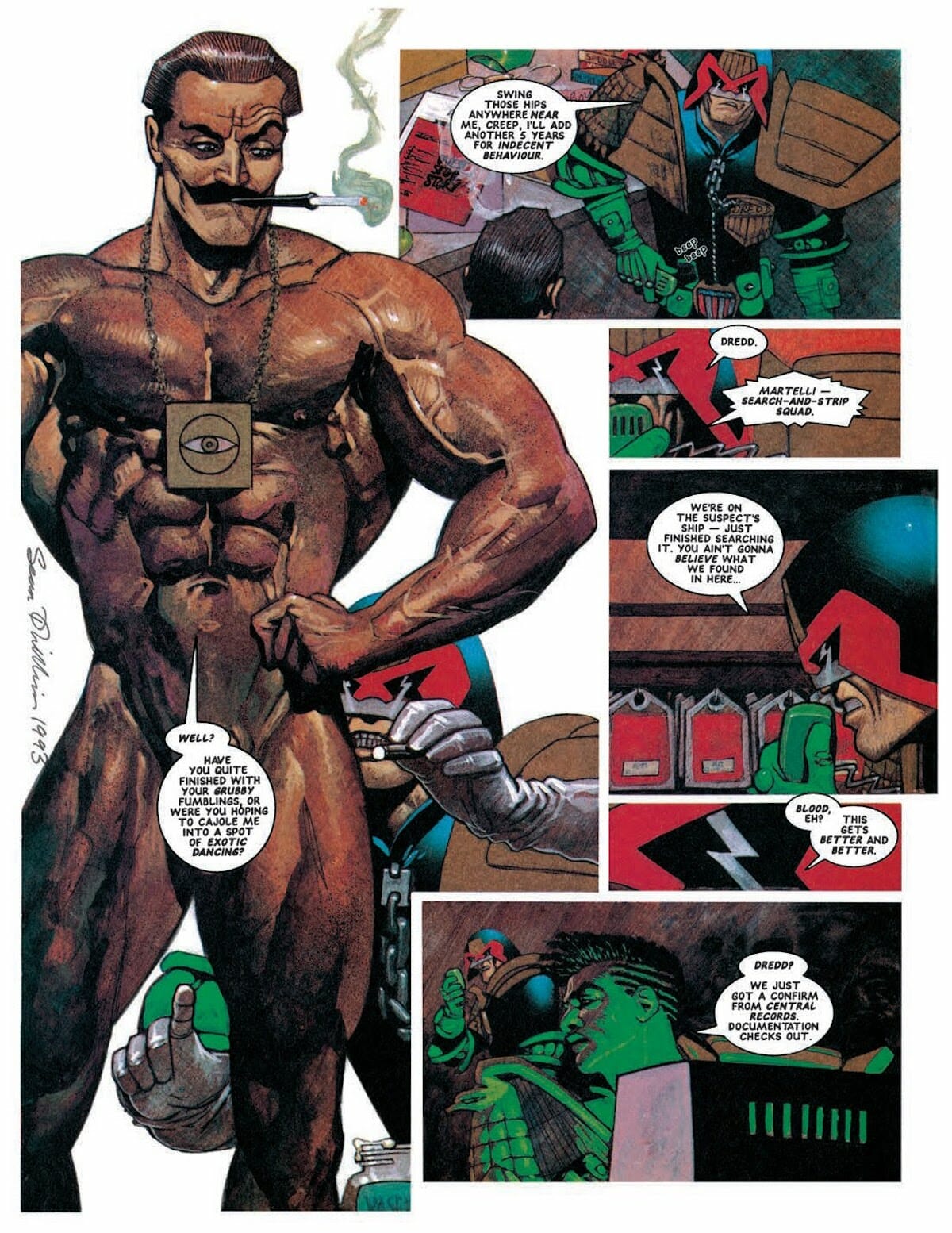
Snubbed early on from the sexy party-fest that was DC’s Vertigo imprint after a cut-short run of his Dr Fate retelling Scarab and a single issue of Hellblazer that was poorly received by the greater American audience, Smith’s career took a wonderful turn into one of the most pivotal points of his career upon his return to the weekly progs of British anthology comic 2000 AD. Following up on earlier series like Tyranny Rex and Indigo Prime, stories like alien colonizer story Firekind – essentially Avatar far before the James Cameron film – and Revere, a chaotic mash-up of astral projections, shamans, psychosexual kinks, and salvation through destruction, otherness and the feeling of existing in a world where you seemingly don’t belong became ever-more-present as recurring themes in his work. Even in his time on the late ‘80s superhero strip New Statesman — affectionately thought to be the deranged man’s Watchmen — the idea of an oppressive, guiding force in the lives of everyday people rings true.
The flip side of this, of course, is Devlin Waugh, his wildly successful strip centering on the titular gay bodybuilding vampire exorcist who looks like Freddy Mercury making deals with the devils at the Vatican. One of the draws for many contemporary readers of Smith’s big queen masterpiece of a character is the camp factor. Smith’s ability to focus attention not on Devlin’s sexuality through obscenity or lewdness but on the sheer weight of his charmingly brassy personality rewrites the gay stereotype into something as blatantly entertaining as any Danny La Rue routine or a Terry Thomas bit – a figure who Devlin’s likeness is actually built upon! The act of flamboyant gayness becomes a way of subverting the gay jokes rather than playing into them. Compare that with something like Straitgait, Smith’s 1990 serial for “mature readers” anthology Crisis, which also directly touches on the idea of gayness as a character trait, but has a more somber tone, dealing in internalized homophobia and the darker aspects of what’s considered a traditional coming out story.
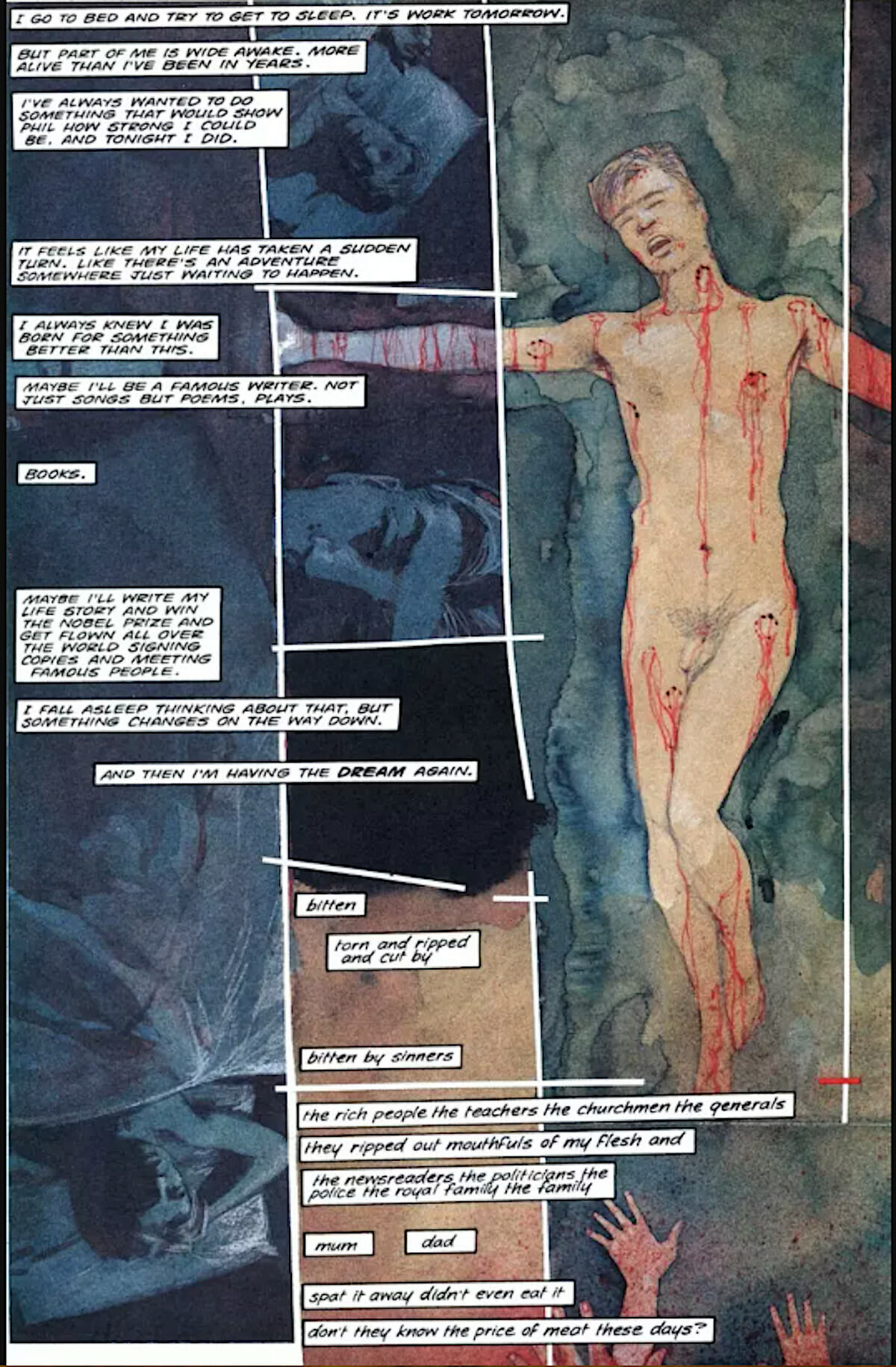
But where, amid all of these beautifully rendered metaphors, lyrical stanzas, subverted jokes, and seeded allusions of repression does Smith’s gayness get lost? As a queer person reading this, it’s a real head-scratcher at the best of times that anyone — let alone someone who would have been alive during the time these stories were being published — could read this as “just kind of weird” surface value stories. The easiest answer would, again, be to blame this all on the hubris of a certain generation of comic readers, but even that comes with a flaw, which is that much of Britain, from the midcentury well into the nineties, was built on the subversive storytelling, humor, and camp entertainment of the queer community.
Up until homosexuality was decriminalized in 1967 by an act of Parliament, being gay (or openly admitting to being gay, at least) was seen as a punishable crime, often resulting in imprisonment or even chemical castration – a sentence brought down upon mathematics pioneer Alan Turing, no less. Though there had been plenty of prominent “odd,” or “queer” (wink wink, nudge nudge) comedians and performers well before decriminalization, the lifting of the “ban”, such as it was, opened the doors to a new era of culture in Britain: one that created a safe space for camp entertainment and unapologetic freedom of sexuality. In the process, this shift created a closet less built for one to come out of, and instead made more into a transparent zoo cage.
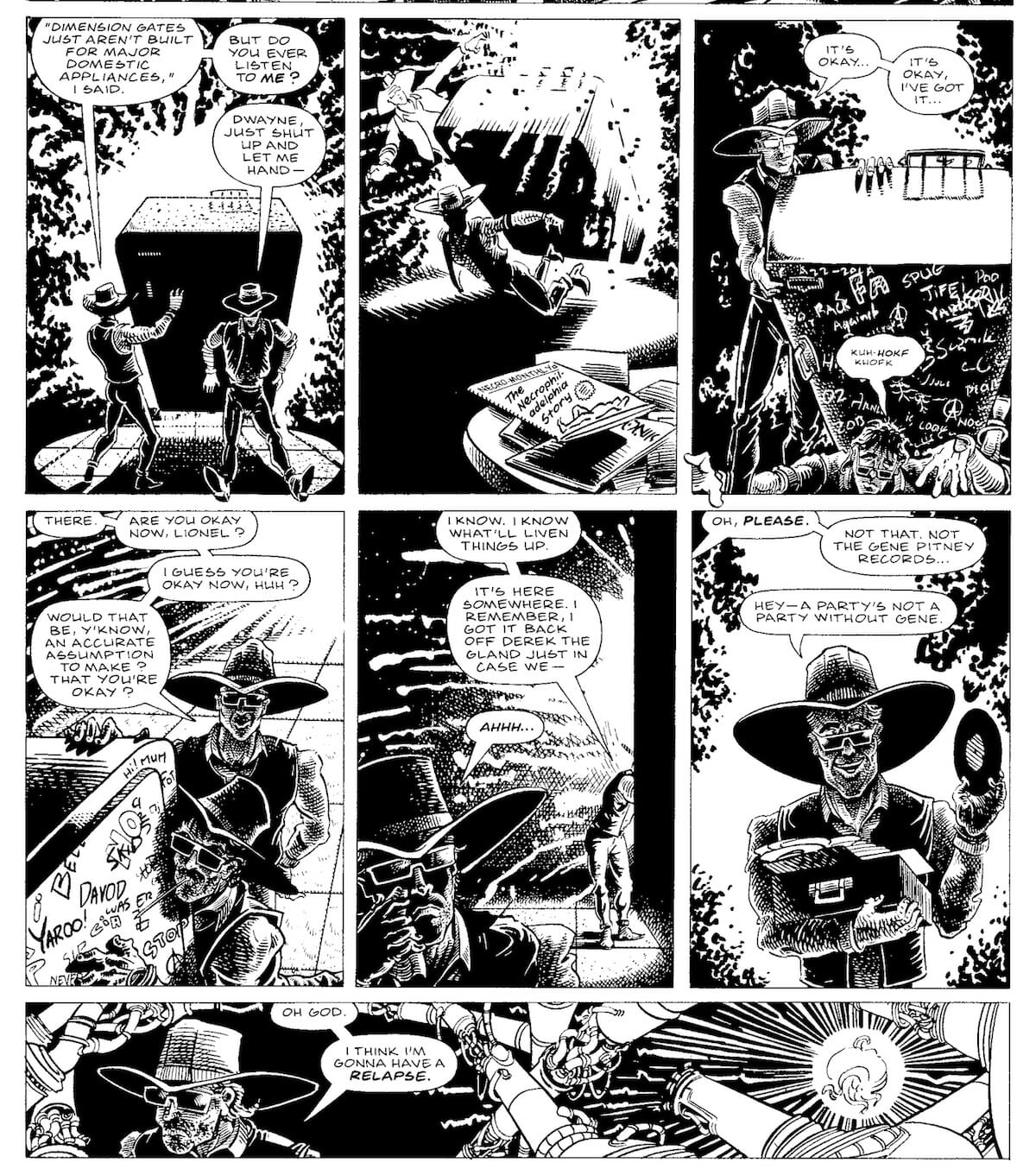
Drag performers like Danny La Rue and Barry Humphries’ iconic persona Dame Edna Everage, and comedienne Eddie Izzard embraced a knowing camp as their primary comedic language, paving the way for a version of queerness that felt acceptable to the larger British audience — something less threatening; something to laugh with, instead of at. For so many reasons, this version of queer liberation is a defense mechanism built around “if I laugh with you at me, you cannot make fun of me and hurt me”, but it’s one that created a revolution and brought gayness and the joy of the community to the forefront. (So far to the forefront, in fact, that the knowing camp language was used by non-queer performers and writers, such as Marty Feldman and Barry Took, presenters like Bruce Forsyth.)
The backlash to this, like so many other things in subcultures, includes a co-opting of the culture by the mainstream.
With so much camp culture dominating British airwaves, tv screens, and comedy routines, the joy of the community accidentally became something of a cover for those who would rather not see things as “gay,” but perhaps just off-the-wall enough and outside of their own frame of reference to be “funny.” (This became even more the case in the late eighties and cresting into the 1990s at the height of the AIDS crisis, where simply existing as homosexual was often automatically – through some truly heinous and publicly broadcast propaganda – associated with the transmission of the virus.)
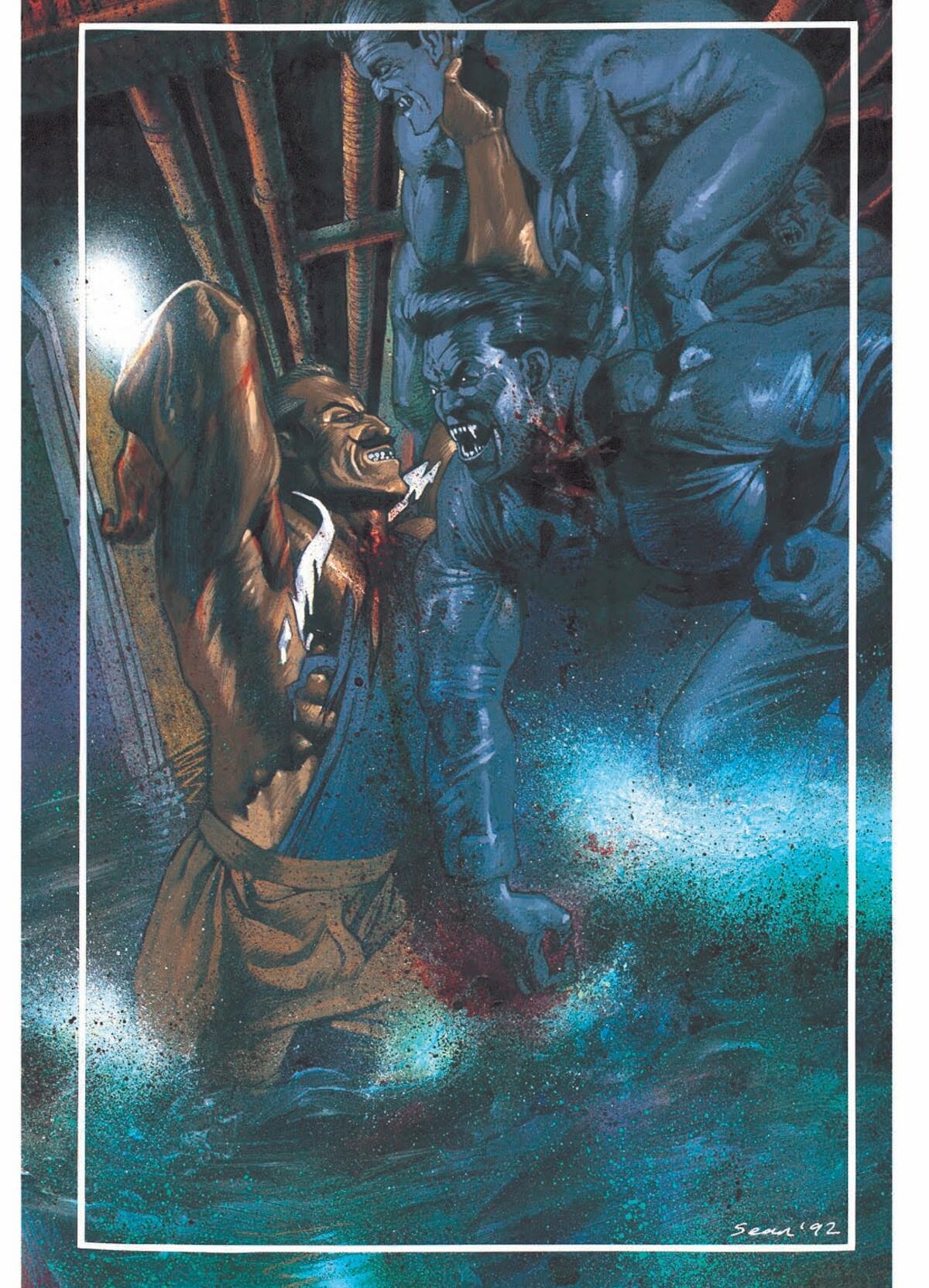
Strangely – but in an all-too-familiar-way in this era of social media and co-opting of closed cultural language – queer language and in-humor highlighted as a lighthearted defensiveness of queer culture became the norm in spaces explicitly outside of LGBTQ+ culture. Language and attitudes created as a a refuge for queer humor and small sliver of acceptance instead were co-opted for the gain of non-queer audiences and enjoyment… so long as the actual queer part stays quiet, of course.
But this is where we loop back to Smith’s approach to comics. For all that 2000 AD and Rebellion have made efforts to build a welcoming space for creators of any background, the readership – particularly with those whose fandom originated back to the ‘70s, ‘80s and early ‘90s – has famously been overwhelmingly straight and overwhelmingly masculine. With many of these readers having grown up during an era of camp as a fun national trait, with Morecambe and Wise sharing a bed without anyone really saying anything about it, the queer subtext clearly present in Smith’s work finds itself shoved down even further when served up to the macho culture of 2000 AD’s readership (and, to be blunt, fellow creators and editors – however unintentionally) during Smith’s golden era.
It seems clear, however, that Smith was unwilling to let that stand unchallenged. Many of his books reflect — even to a small degree — a nuance of the queer experience, even if it may not have been his own, of handling the difficulties around you while maintaining a gag, a persona, or a flamboyance to save face. The beauty of Smith’s writing in this regard is that he never explicitly explains queerness to the reader either – never “coming out” or directly calling out his characters for their preferences – but instead allows them to exist as themselves, loud and proud under their own terms and through their actions.
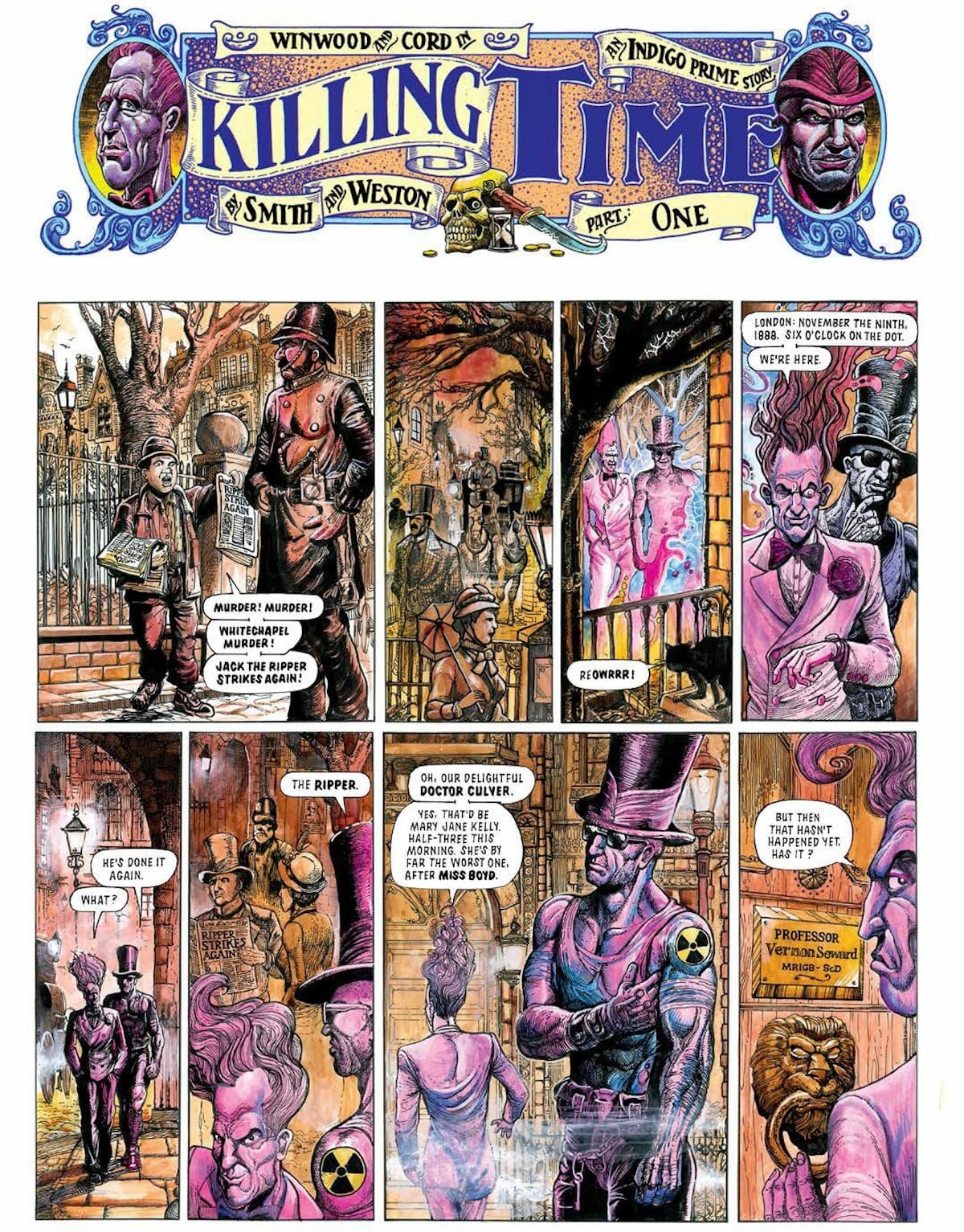
This nuance, however, finds Smith’s works poised at the crossroads of appealing to a dominant mainstream macho culture of the era and playing with his affinity for camp and the absurd – a combination that ultimately shows just how good Smith was, and is, at code-switching for his audience. That ability thus created a narrative that perhaps Smith was just that one writer who was “a little out-there” in most people’s memories of their fandom; a narrative driven, once again, by the willingness to use coded language but an unwillingness to address the equal parts joy and pain of its roots.
For all intents and purposes, John Smith made a career out of code-switching in a time – and with an audience –that was somehow both ready for him and not ready for him. I guess in a way those queer-engrained chameleon abilities came back to bite him in the ass as the times moved on, but decades later we are given an opportunity to appreciate all of his work for exactly what it was, when it was, and – more importantly – because of who Smith was at the time.
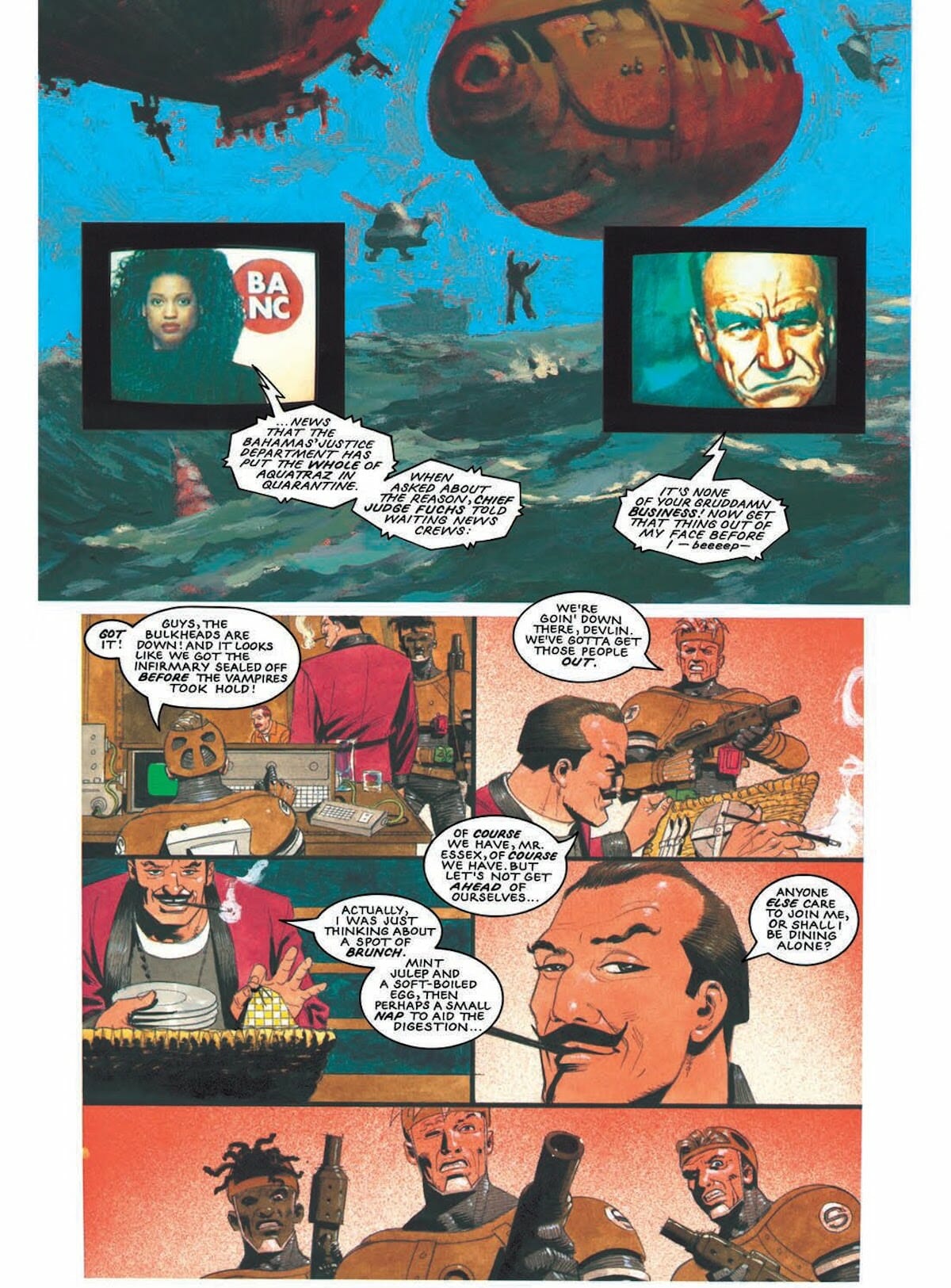
From Firekind to Straitgait; from the first sight of Devlin’s cravat to the first installment of Indigo Prime, homoeroticism is something that has been prevalent in Smith’s work. While many readers may push back towards this idea under the guise of “knowing but not caring” or feigning ignorance because they just want to read a story without having anybody’s sexuality shoved into view, the opportunities missed in reading these works is insurmountable and ultimately a disservice to both the reader and the material.
To say that Smith is solely a strange writer for the sake of being strange, or that he’s camp for the same sake of any run-of-the-mill comedian, is to dismiss the core of nearly every story he’s ever written, and the experience it took to create such vibrant stories.
To be a fan of John Smith is to be a fan not just of a singularly special 2000 AD writer, but a gay writer whose creations left a signature on the brand as a whole. The signs have always been there in Smith’s work, and it’s high time we, as a larger and newer mainstream, follow to where they’ve been trying to lead us all along.
